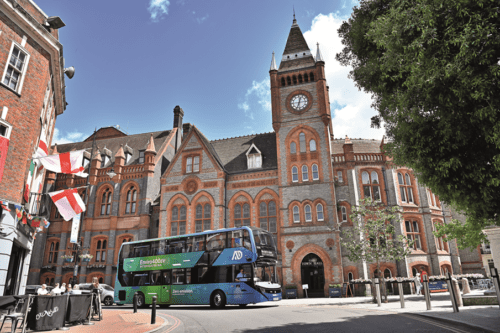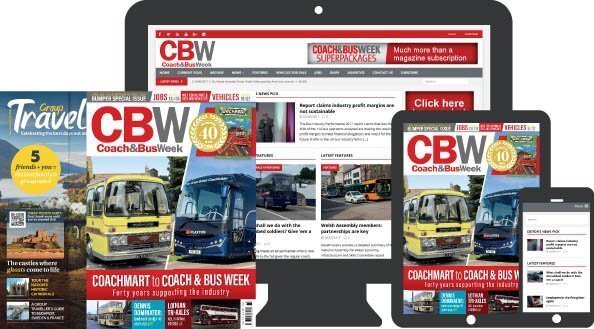
Adrian Morton takes a trip back to where he started his industry career and test drives the next generation Alexander Dennis Enviro400EV electric bus
Not wanting to show my age but this month marks 30 years of passing my PCV licence at Reading Buses, at the tender age of just 18. and the beginning of my career in the bus and coach industry. I was fortunate in knowing most of the management team at the time and many of the drivers from my passion for buses in my childhood and spells of work experience whilst studying at school. For a long while only persons over the age of 21 were recruited for the driving school, or academy, as it later became known but fortunately, I was given the opportunity and the rest as they say is history.
Having been made aware that for two weeks in July Reading Buses would be trialling the fully electric Alexander Dennis new generation Enviro400EV, I considered it a fitting time to pay a return visit to the town and see how technology has evolved over the last three decades. Twenty-four have been ordered by the company for routes 17 and 21. Current CEO of Reading Buses Robert Williams very kindly responded to a message and afforded me the opportunity to relive my youth by once again taking to the streets of Reading in a double-decker bus, albeit one slightly different to the Leyland Titans, Olympians and MCW Metrobuses that I had driven previously!
History
After some vehicle familiarisation we headed into the town centre to then follow the route of the erstwhile number 17, out to its eastern terminus at The Three Tuns on Wokingham Road. The route hasn’t changed in all that time; indeed, it can trace its history back to 1901 when the company first started operations with horse-drawn trams.
The outer parts saw extensions with the advent of trolleybuses and it was at that time it became numbered 17, previously being known as the ‘mainline,’ a nickname still used to this day by some of the older generation still working at the company. The service, save for a small diversion in the town centre, due to the pedestrianisation of the main shopping area, Broad Street, still follows the route of the trolleybuses some 80 years prior and really is one steeped in history. It has always been the town’s flagship route and today maintains a daytime frequency of every 7-8 minutes. The company has long been at the forefront of innovation; even in my time some vehicles were run on biodiesel and trials were undertaken with gas-powered Optare Metroriders. Later, in 2008, 14 ethanol-powered Scania OmniCitys were introduced to the route.
Shortly after leaving the town centre, I couldn’t resist having a photo opportunity outside one of the most famous landmarks on the route, and possibly the area, the façade of the former Huntley & Palmers biscuit factory. Reading affectionately became known as the ‘Biscuit Town’ when the expansion of what started out as a small bakery in 1822 saw Huntley & Palmers become the largest biscuit manufacturer in the world, in its heyday employing over 5,000 people. Part of the later premises opened in 1846 remains, although production in Reading finally ceased in 1976.
[…]By subscribing you will benefit from:
- Operator & Supplier Profiles
- Face-to-Face Interviews
- Lastest News
- Test Drives and Reviews
- Legal Updates
- Route Focus
- Industry Insider Opinions
- Passenger Perspective
- Vehicle Launches
- and much more!


